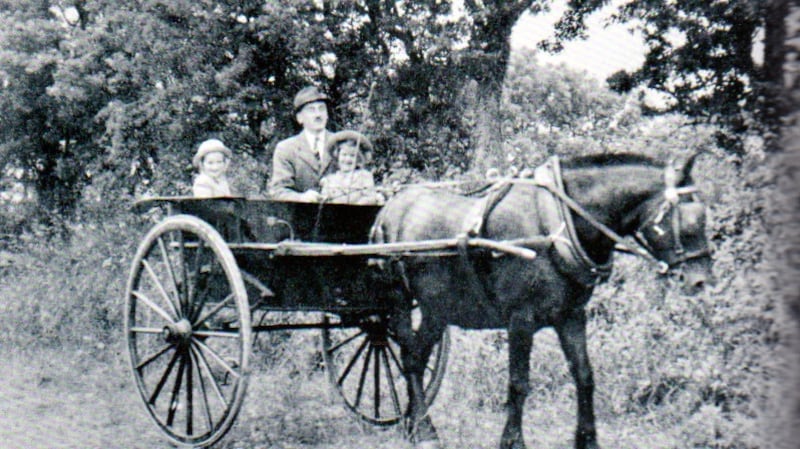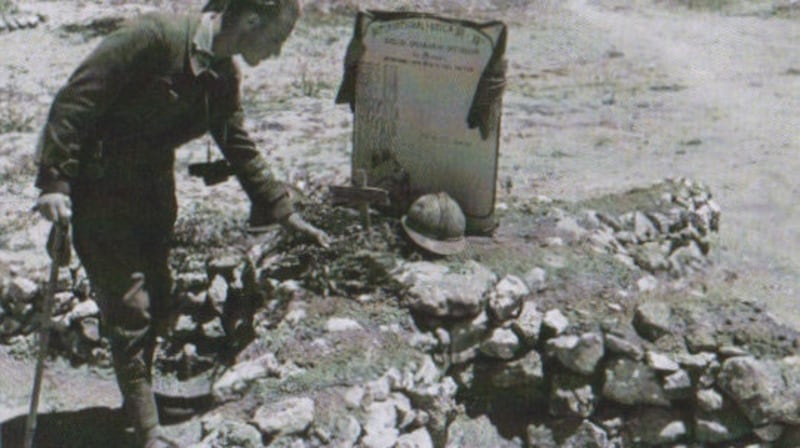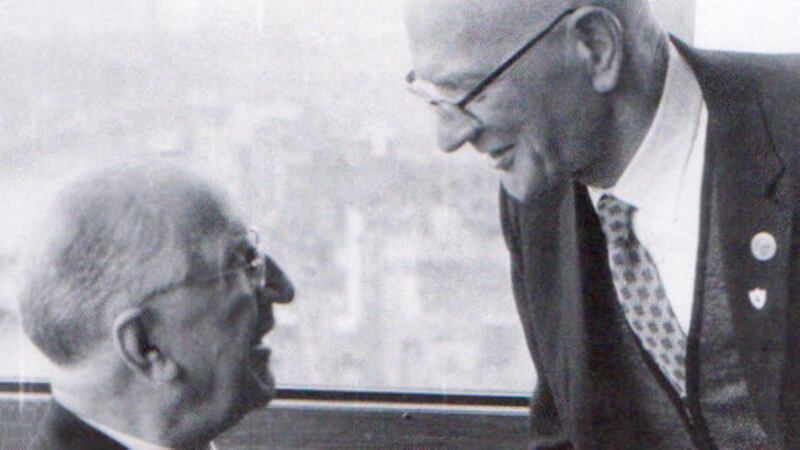In 1938 an Austrian Jew fled the Nazis for a new life in Derry. Ludwig Schenkel's remarkable story is recounted in Ken McCormack's Derry, Vol Two: The Blackbird and the Canary (Colmcille Press, £10).
Schenkel, along with his brother Paul, left Vienna just before the Anschluss – Hitler’s invasion of Austria – with 10 shillings between them. Paul eventually moved to England and Ludwig remained in Derry, joining cultural and social groups. He set up a leather bag and umbrella-making business, but his recreational passion was the new Kodachrome colour film. Over the next 40 years he took thousands of photographs in both Derry and Donegal where he had a holiday home.
Schenkel’s legacy is an important collection of images which have been restored and reflect not just the landscape, sea and sky, but the spirit of local life in the countryside.

From the same era, Midnight Again: The Wartime Letters of Helen Ramsey Turtle (Mahee Island, £19.99), edited by John Wilson Foster, provides, through the prism of an American eye, a snapshot of life during the second World War. Helen married a Northern Irishman, Lancelot Turtle, and came to live on the shores of Strangford Lough. She wrote animated letters to her family back in Colorado, keeping them abreast of domestic life in Belfast and Co Down.
The letters evoke uncertainty over the war and its impact on everyday life through blackouts, rationing, rising prices, travel restrictions, the Belfast blitz and the departure of friends going off to join the army. In between times, the family enjoyed the theatre, concerts and the gramophone, and read books by Angela Thirkell, Monica Dickens and John Steinbeck. Explanatory footnotes elucidate nicknames and slang terms such as “wheeker”, a local word for awesome, or “brave and close” for “pretty close”. Letters also refer to a conflict a few years earlier – the civil war in Spain – and the fate of refugee mothers and their babies.
Blow-by-blow accounts
The Spanish civil war itself is the subject matter of From Suir to Jarama (Orla Kelly Publishing, €10), Author Liam Cahill focuses on an Irish volunteer from Waterford, Maurice "Mossie" Quinlan, considering his life and legacy in the war. At the age of 25, Quinlan joined the British battalion of the 15th International Brigade for English speakers which was formed at the end of January 1937.

The book starts in medias res with a blow-by-blow account of the terrifying attacks by the Nazi Condor Legion at the Battle of Jarama, a river east of Madrid. This was an attempt by General Franco’s nationalists to dislodge the republican lines and resulted in heavy casualties on both sides. Less than three weeks later, on February 17th, Quinlan was killed by a sniper’s bullet while attempting to rescue a wounded comrade from between the opposing lines.
The author, a second cousin of the young soldier, delves into the back story of Quinlan joining up. He came from a well-known political dynasty in Waterford. His grandfather had been an ally of Parnell and was mayor of the city in 1906-1907. An uncle was an alderman and high sheriff. The rifleman was one of 19 Irishmen killed at Jarama and is buried in the cemetery at Morata de Tajuna, the nearest town to the battlefield.
Trade union
Another figure with an internationalist connection, Nicholas (Nixie) Boran, a coalminer from Kilkenny, was a leading trade unionist. His daughter, Anne Boran, has painted a scholarly yet affectionate portrait of his life in Challenge to Power: Nixie Boran (1904-1971), Freedom and the Castlecomer Coal Miners (Geography Publications, €35). At the centre of life in the Castlecomer coalfield, Boran was closely involved in post-independence battles for a share of Ireland's resources and took the radical step of forming a communist trade union in a rural part of the country.

In 1949 Boran was at the heart of one of the longest strikes in Irish labour history – lasting 11 months – which addressed the wage inequalities of all categories of mine workers. Elected to the executive of the IT&GWU, he addressed at national level, workers’ issues over conditions and rights, succeeding in a campaign to have the miners’ lung disease, Pneumoconiosis, categorised as an industrial disease. Described as “a radical pragmatist”, Boran was the first Irish worker-delegate to speak at the International Labour Conference in Geneva in 1956.
Robin Hood
From an earlier era in Irish historiography, the enigmatic life of George Macnemara is analysed by Brigid Clesham in Cong: Folklore & Facts 1722-1760 (Mayo Historic Estates, €23). An Irish Catholic middleman, or head tenant, Macnemara came from a branch of the family in Killaloe, Co Clare. Variously described as a Robin Hood and champion of the poor and oppressed, he was said to have a magnificent presence with flashing eyes and raven hair. Reputedly an excellent horseman, he owned a famous mare that could stand on her hind legs, jump through the windows of country houses and walk upstairs.
Macnemara’s colourful folk memory and his varied, rich and “hot tempered” life have been perpetuated over the centuries, and he was believed to have links with highwaymen as well as the smuggling trade. At one stage he was prosecuted for harbouring robbers; at other times he was detained in jails in connection with dubious affairs but escaped a prison sentence. He was also involved in a succession of court cases in a dispute over his lease and non-payment of rent in Cong where he was resented by his neighbours as an interloper after he married a wealthy widow in the locality.
The author concludes that while he was an opportunist, the truth of George Macnemara’s life probably lies between the two extremes of philanthropist and outlaw.
A welcome collection from the Royal Irish Academy, Irish Lives in America (¤19.95), edited by Liz Evers and Niav Gallagher, documents 50 people in nine categories spanning 300 years of history. Short diverse biographies include those working in medicine, science and technology, business, stage and screen as well as politics and religion. The "lives in print" chapter looks at some better-known figures, such as the novelist and columnist Maeve Brennan and Tyrone-born John Dunlap, who ran a weekly newspaper and printed the Declaration of Independence (1776).
Some names have been forgotten. including Philip Embury, one of the founders of Methodism in America, and Mary O’Connell (Sr Anthony), known as “the Florence Nightingale of America”, who saved countless lives in field hospitals during the civil war.















